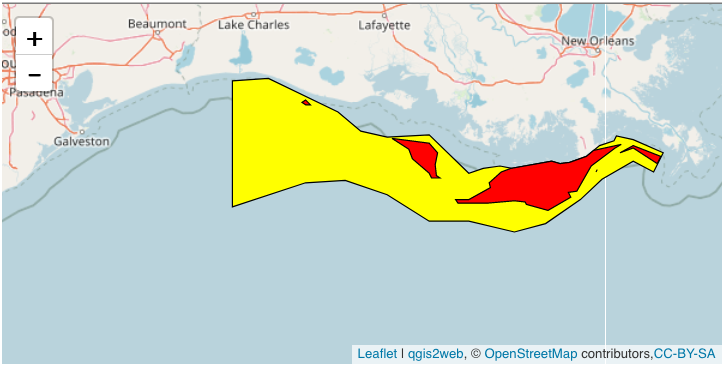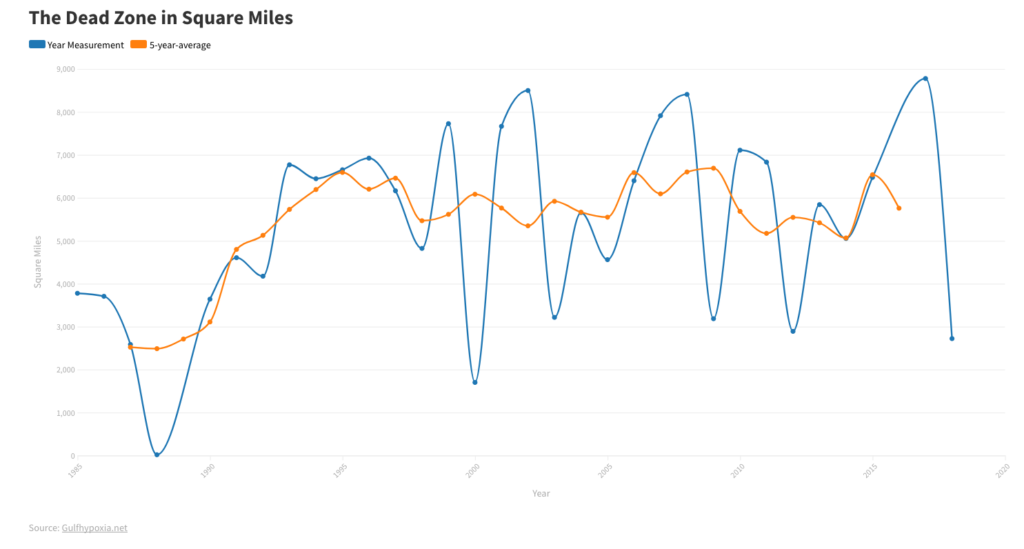Erin Jordan / The Gazette
3 December 2018
Chapter 1:
America’s Midwest faces worsening trouble with undrinkable well water, recreational lakes choked with toxic algae and water treatment plants requiring budget-busting upgrades to remove pollution washing from farm fields and industries.
A government task force said in 2008 it would cut nitrate and phosphorus pollution 45 percent by 2015 — both to help the Gulf of Mexico, where the nutrients have created a sprawling dead zone in which wildlife cannot survive — and to protect the health and safety of Midwest waters.
Now 10 years later, the dead zone is growing, the 45 percent goal has been shoved back 20 years and, although millions have been spent in nearly every state along the Mississippi River, it’s not clear any progress is being made, a four-month investigation by The Gazette found.
“Their goals for reduction in the dead zone at the Gulf are not being met — not even close,” said Kris Sigford, a retired water quality program director for the Minnesota Center for Environmental Advocacy. “In many cases, we’re going the wrong way.”
The Gulf’s oxygen-deprived dead zone, called that because fish and other organisms must swim away or die, has an average size over the past five summers of 5,772 square miles. That’s three times larger than the task force’s goal of about 1,900 square miles.

The group established the 45-percent reduction in nitrate and phosphorus running into the Mississippi because that’s what scientists think is needed to shrink the dead zone.
The task force’s 2008 Action Plan, a 64-page document that doesn’t describe enforcement options, asked each of the 12 central U.S. states to develop their own plans for reducing nutrients. The states are Minnesota, Wisconsin, Iowa, Illinois, Missouri, Indiana, Ohio, Kentucky, Tennessee, Mississippi, Arkansas and Louisiana.

The Gazette reviewed all 12 state strategies, talked with dozens of state agency leaders and found the following:
- The Gulf Hypoxia Task Force said every state should complete a strategy by 2013. But only four did. Kentucky and Tennessee still have only drafts.
- Only five states established baseline numbers for nitrate or phosphorus loads in surface water, making it impossible in the other seven to know if improvements are being accomplished.
- Five states haven’t updated their strategies after initial publication, contrary to advice from the U.S. Environmental Protection Agency.
- Only one state — Minnesota — requires farmers to implement conservation strategies to reduce runoff.
- All 12 states now require water monitoring at some facilities, usually large municipal wastewater treatment plants.
- All the states monitor water quality at public beaches to some degree, leading to more than 1,400 closures or advisories for high levels of bacteria or toxins from algae this past summer. More than 200 fish kills were reported in the states in 2017, with many caused by contaminants washing into waterways.
